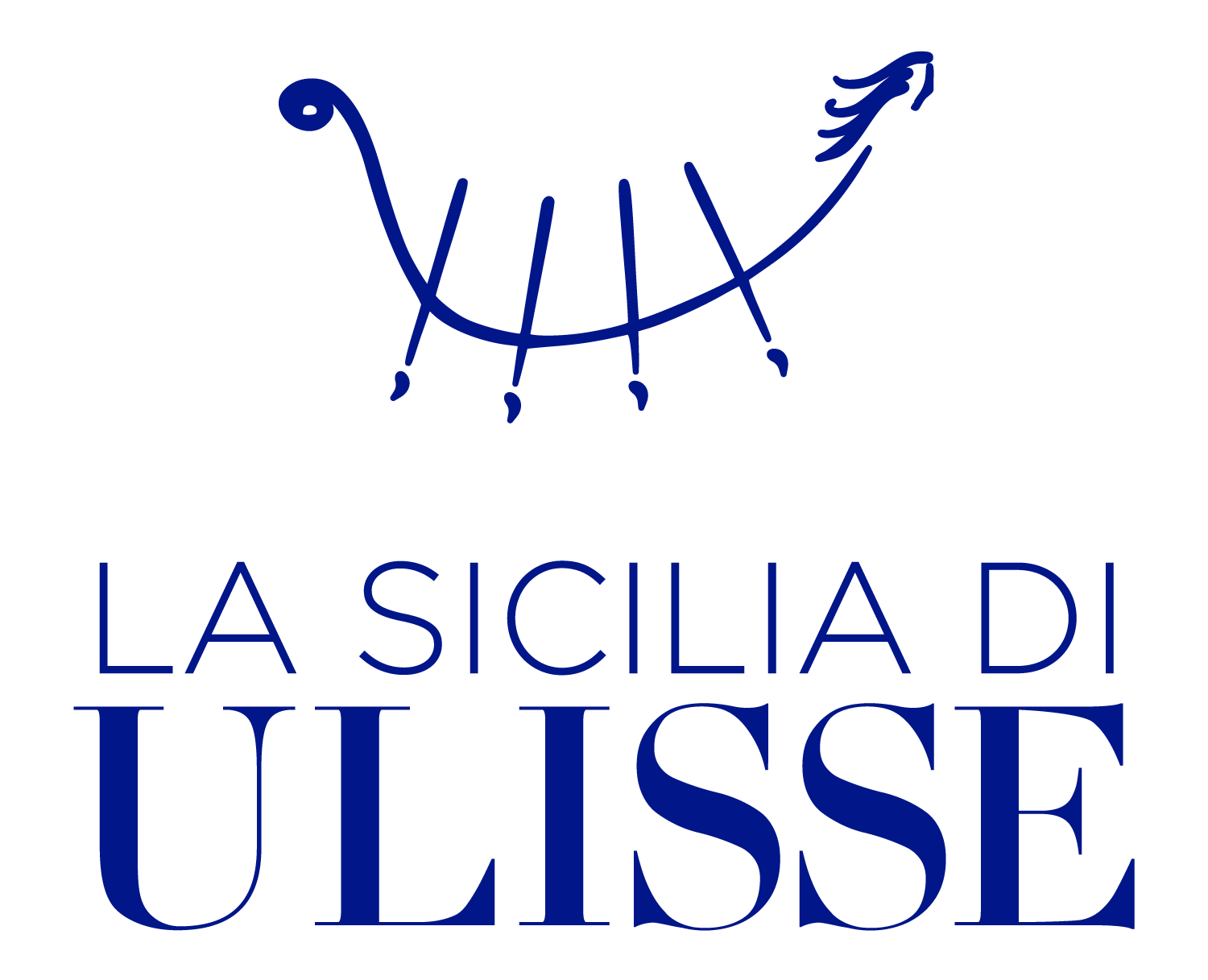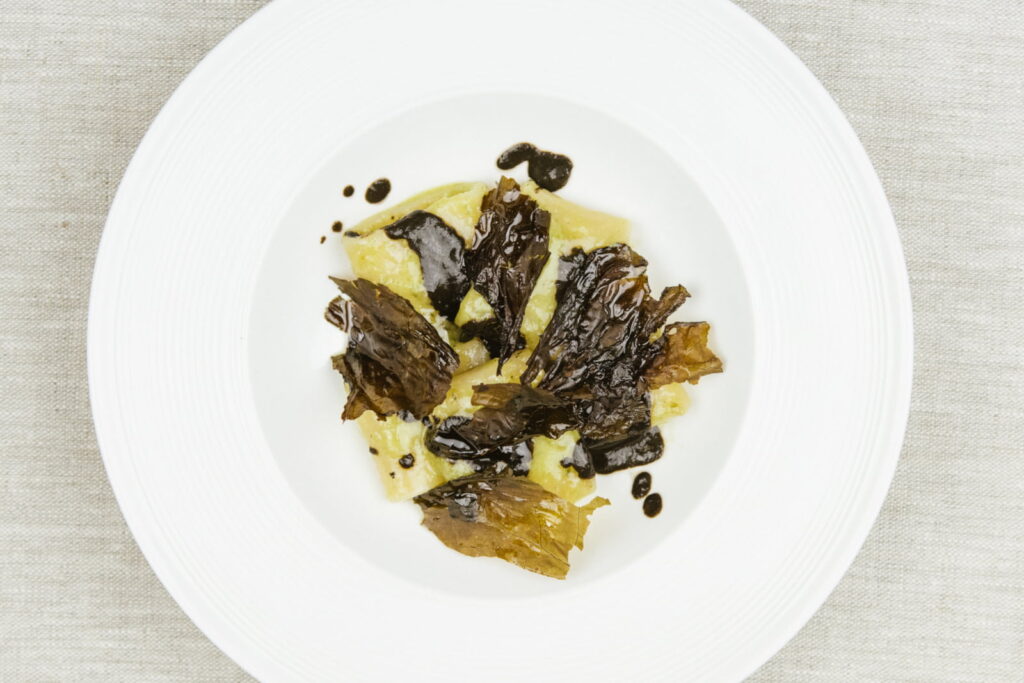
Chef Martina Caruso proposes her recipe of Mezzi paccheri pasta with squid, Tumapersa cheese and crispy chard.
A dish that represents the gift of a memory and, at the same time, the desire to recover the culture of a product. This is the definition of a recipe with a strong evocative power that tells, with its aromas and flavors, the story of a cheese that was once produced in the Sicani Mountains, in the central-southern area of Sicily: the Tuma Persa cheese. Currently, only one man, Salvatore Passalacqua, after engaging in continuous experimentation, has saved this product destined to be forgotten.
Tuma persa is a buttery cheese made with cow’s milk, soft on the palate and with a slight spicy-smoked and fresh aftertaste.
The sea-land combination between squid and Tuma Persa is certainly successful and gives life to a dish that smells like home. Here is how to prepare it.
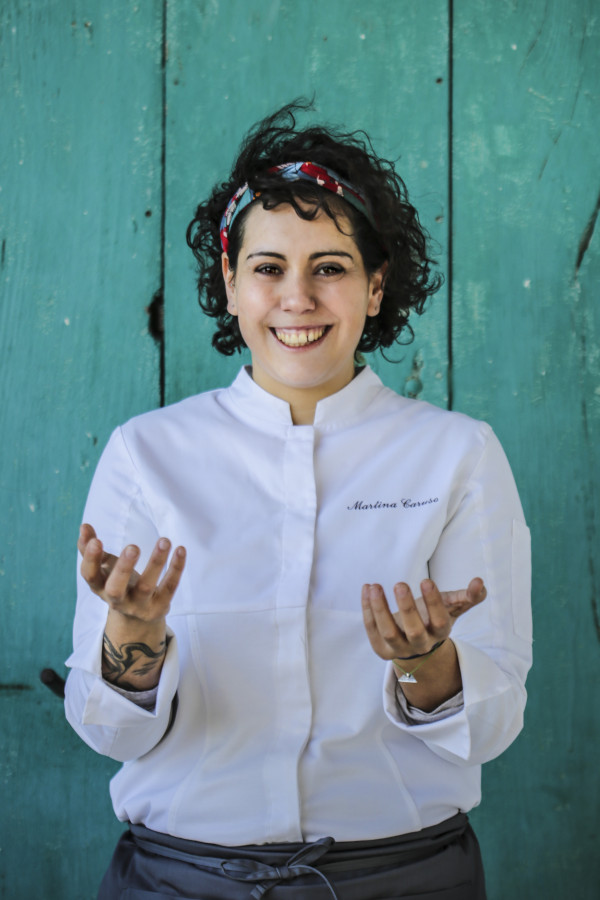
Ingredients for 6 people:
PASTA
500 g Pacòte Il Cappelli Monograno Felicetti
SQUID BROTH
2 lt water500 g chard stalks
1 kg clean squid
50 cl extra virgin olive oil
50 cl white wine
SQUID ENTRAILS SAUCE
500 g squid entrails
300 g tentacles
50 cl lemon juice
600 g peeled tomatoes
50 cl white wine
2 red onions

CRISPY CHARD
500 g of chard
200 cl sorrel juice
Extra virgin olive oil
SAUTEED MINCE
100 g parsley
3 celery sticks
2 white onions
Extra virgin olive oil
WHIPPING
Lost Tuma cheese
Procedure
For the squid broth: toast the chard and squid for a long time, blend with the white wine and finally add the water.
For the squid ragout: toast well the tentacles, entrails and onion, blend first with the wine and then with the lemon, finally add the peeled tomatoes and blend everything.
For the crispy chard: put the chard to marinate in the sorrel juice for two days. Spread the chard in the pan and bake at 180 ° C for 2 minutes and then at 90 ° C for 25 minutes.
For the mince: clean everything and blend by adding the oil. Get a creamy consistency.
Cook the mezzi paccheri in a pan of salted water. Add a spoon of mince vegetable and a drizzle of oil to the pan, sauté and blend with the white wine.
Finally, add the squid broth. Stir in the lost tuma persa cheese. Serve the half paccheri with a spoonful of ragout and the crispy chard.
Martina Caruso
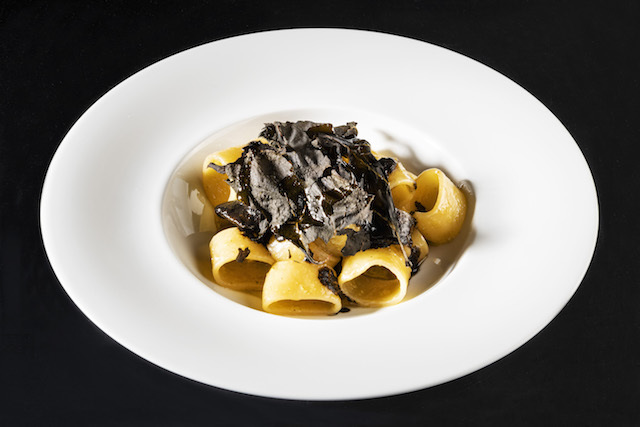
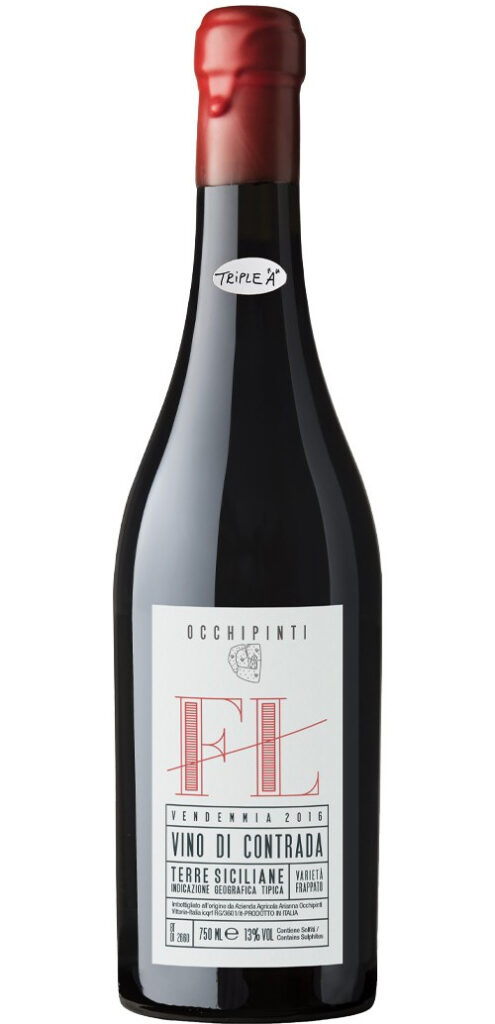
WINE PAIRING
Arianna Occhipinti. Il Frappato FL – contrada Fossa di Lupo 2017
“Vittoria, wine, vineyard, dry stone walls. This is my land. Early in the morning the sun rises on the Iblei Mountains, while the sky turns red in layers and the warm light spreads amongst the rows of “Fossa di Lupo”, my district. I love the grapes of these places, Frappato and Nero d’ Avola. I feel myself in their expression, in being harmonic and unequal. I love the strength of the know-how to bring in the past and the future at the same time.”
Arianna Occhipinti is one of the most charismatic producers in Sicily. Very often, when I am abroad, it happens to find her name in the wine lists of renowned restaurants; often as the only Sicilian reference or among the Italian labels, it is sure to be one of their proposals. With her great skill and value, she created a strong and recognizable brand.
After studying viticulture and enology in Milan, she returned to Vittoria in 2004, and there, at the slope of Iblei Mountains, she began to cultivate her first hectare of vineyards to reach after up to 25 hectares. She produces Frappato di Vittoria, Nero d’Avola, Albanello and Zibibbo.
Arianna uses biodynamic practices followed by the gesture of the man who takes care of the land, from cultivation to pruning, till processing the fruit without using chemicals. Thanks to her sensitivity and skill, the result is a wine of great balance and territoriality, a genuine and greedy wine of which I am a great consumer.
The Frappato FL is part of the contrada wines project; the separate vinification of three different parcels give life to three wines: PT BB FL. The Fossa di Lupo is characterized by sandy and calcareous soil, north exposure and sapling vines of about 40 years. It expands up to 2 hectares and the bottles produced are 2,700. The vinification takes place with maceration on the skins and spontaneous fermentation in 85hl concrete vats for 25 days with daily pumping over and punching down, then racking and aging in the same containers for another 6 months and finally in Austrian oak barrels for 12 months. The result is a juicy wine, with pomegranate scent, balanced acidity, sea breeze sensations of freshness and sapidity.
Luca Caruso



